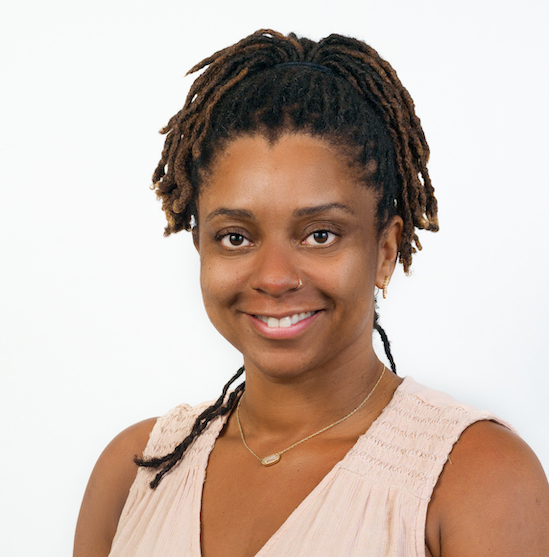
Tiana Pitts is a former math teacher and coach with the New Teacher Center. In spring 2022, she served as a coach for teachers in Impact Florida’s Solving with Students Cadre, which piloted an innovative approach to professional learning based on student feedback.
Tiana led regular virtual coaching sessions with each teacher who opted to receive coaching support, and her support was invaluable to many teachers who were grappling with tough questions about the feedback they received and how to improve math experience.
Because coaching is such a critical part of effective professional learning, one of Impact Florida’s Five Conditions that Support Great Teaching, we wanted to learn more about Tiana’s coaching approach through the following Q&A.
What interested you in the Solving with Students Cadre?
With my background being in math, working with math teachers is always attractive. I was very interested in the way the student voice was at the center of this project. Education has had some really hard couple years with the pandemic, and student voice is definitely a missing piece over these difficult times. I was excited to dig into data that supported how students felt about their education experience and what they needed from their teachers to be successful. I was also looking forward to working with amazing teachers that chose to do this. They chose to grow and learn from their students.
In your mind, what are the benefits of having a coach from outside the school or district?
A lot of the teachers I’ve worked with expressed that the coaching was key to their success. It was a different lens, and I was able to offer and push them to look at things they didn’t see. Educators usually are their own harshest critic, and I always started off with them recognizing the things going well based on their data. That was sometimes difficult for teachers to do. They wanted to start with what they felt was a deficit. The more questions I asked, the more teachers recognized their worth and their efforts that were going well. Being outside the school, I felt was beneficial to biases that can creep in if you are in the thick of it. When a teacher shared struggles about a student, I didn’t have a reference for their behavior, so I was able to give suggestions and coach them through their own mindsets and focus on how to reach the student where they were.
How do you create relationships with teachers that allow them to be open and honest and vulnerable?
Our first session together was more about getting to know each other than it was about their data. My ultimate goal was to establish a relationship that would be foundational to success. A trusted coaching relationship was very important in this project being that all sessions were virtual and I was coaching from another state. We started off with who they were as an educator, what their “why” for teaching was, and even deeper in their “why” for choosing the school where they were currently teaching. I set a tone of collaboration and support so that teachers felt comfortable. Coaching is not evaluative. It should be a relationship of accountability, and collaboration. I also felt it was always important to leave each session with clear next steps for both myself and the teachers. We share ideas with each other, and grow together. I took this approach with teachers, and I am a better coach from the experience.
Why is a strengths-based approach so important to your work as a coach?
I feel like we as educators don’t pause and recognize the good things happening often enough. It’s important to affirm the work being done and the success from those efforts before digging in the opportunities for growth. If you don’t identify what’s working and what actions actually contributed to the success, how do you grow your practice? It’s just as important to identify what actions to continue as it is to identify actions to start doing. Beginning with the asset-based approach also builds confidence and continues to build that trust and vulnerability.
How do you try to support teachers to reflect on student demographic differences in their data – for example, across gender and race?
Reflecting on student demographics is really critical in this work, but can also be uncomfortable. I am passionate about equity in education, so I made a decision early that I would always bring that lens. I asked questions to get teachers to look at the data and discover celebrations and areas of growth in demographics. If the questions didn’t get them to notice, I decided the importance of the moment and took a more instructive stance where I revealed what the data was saying. A strong, established relationship made these conversations productive and successful. I would suggest all coaches always build trusting relationships and have hard conversations, because those conversations represent opportunities to serve the students behind the data.
What teaching strategies seemed to work best for teachers?
I noticed that the strategy with the most impact was offering students’ choices about how they do their work. This may look like incorporating a choice board into classroom activities. (You can see an example choice board in our profile of Anna Stewart.) Student choice and ownership really touched multiple learning conditions in a very positive way. Teachers and students really enjoyed the benefits of students being bought into the content and excited about class. Most teachers have already committed to having student choice strategies implemented on day one in their classroom next year.
Interested in learning more? Explore the results of the Solving with Students Cadre and hear teacher and students experiences in our interactive online report.
